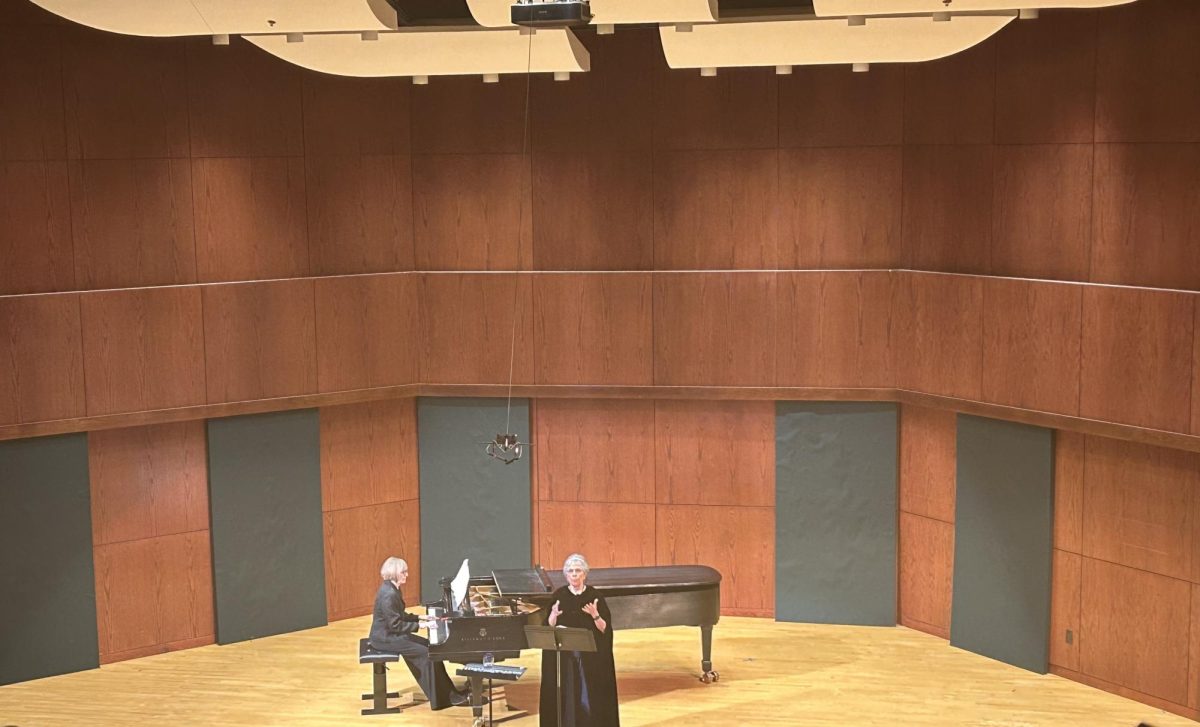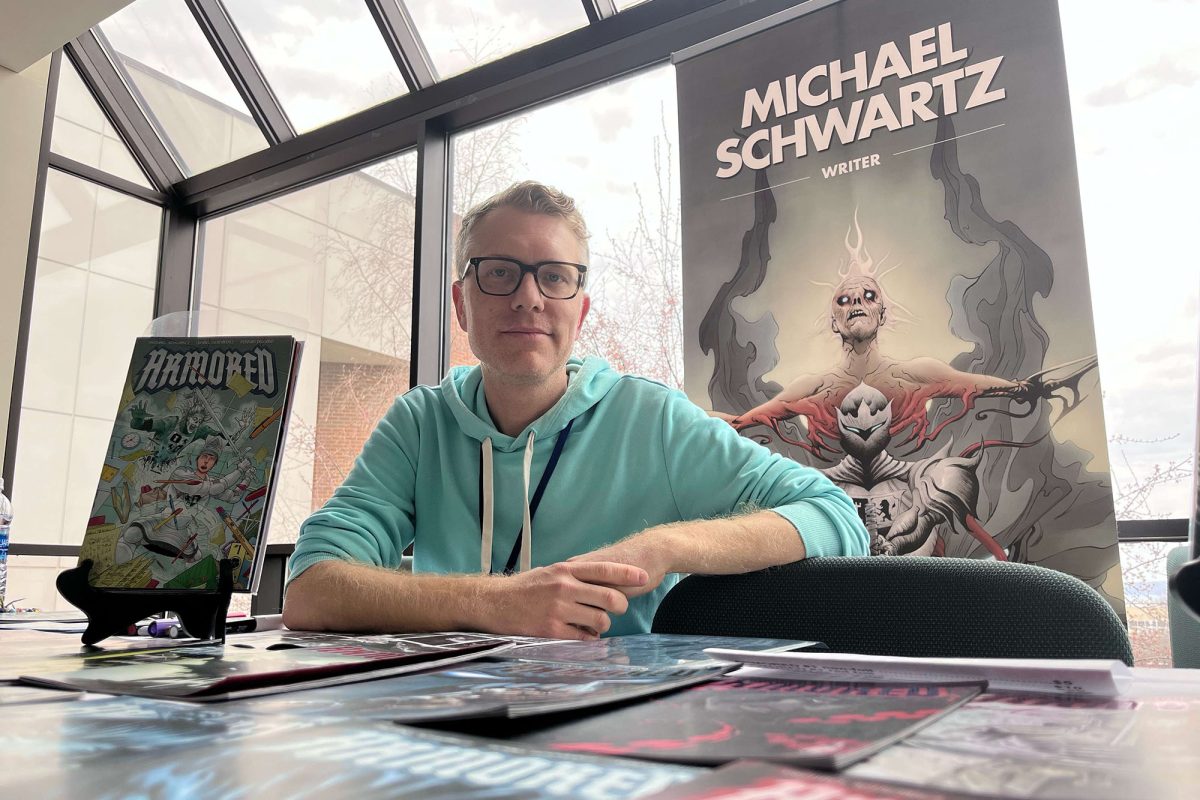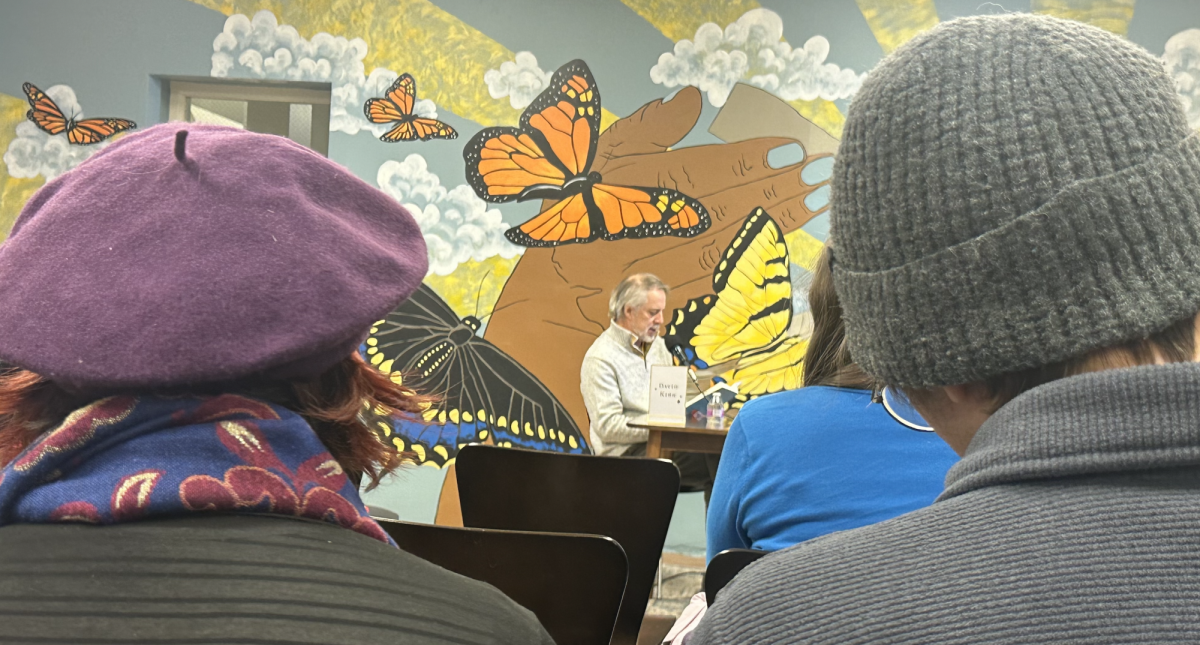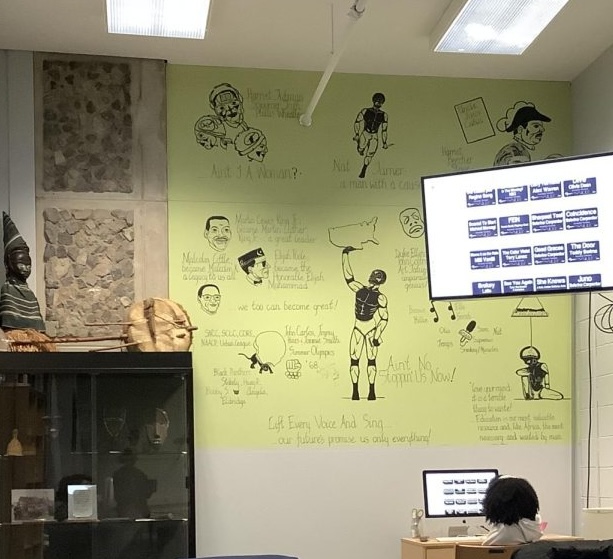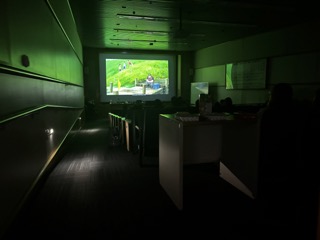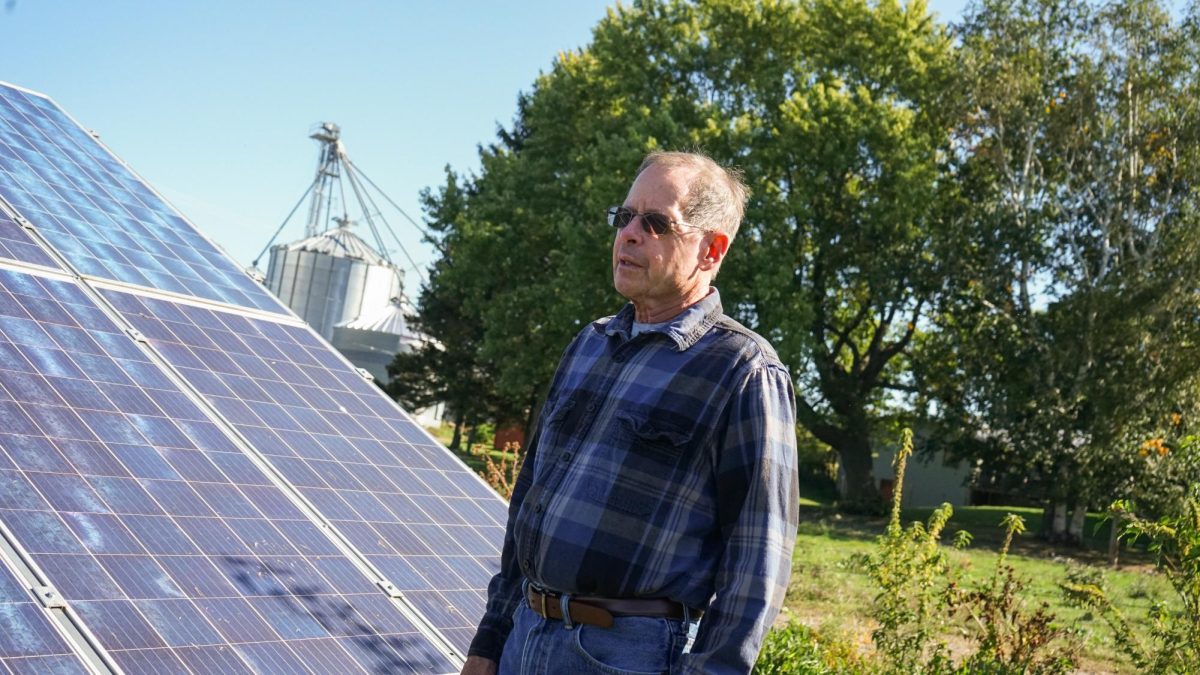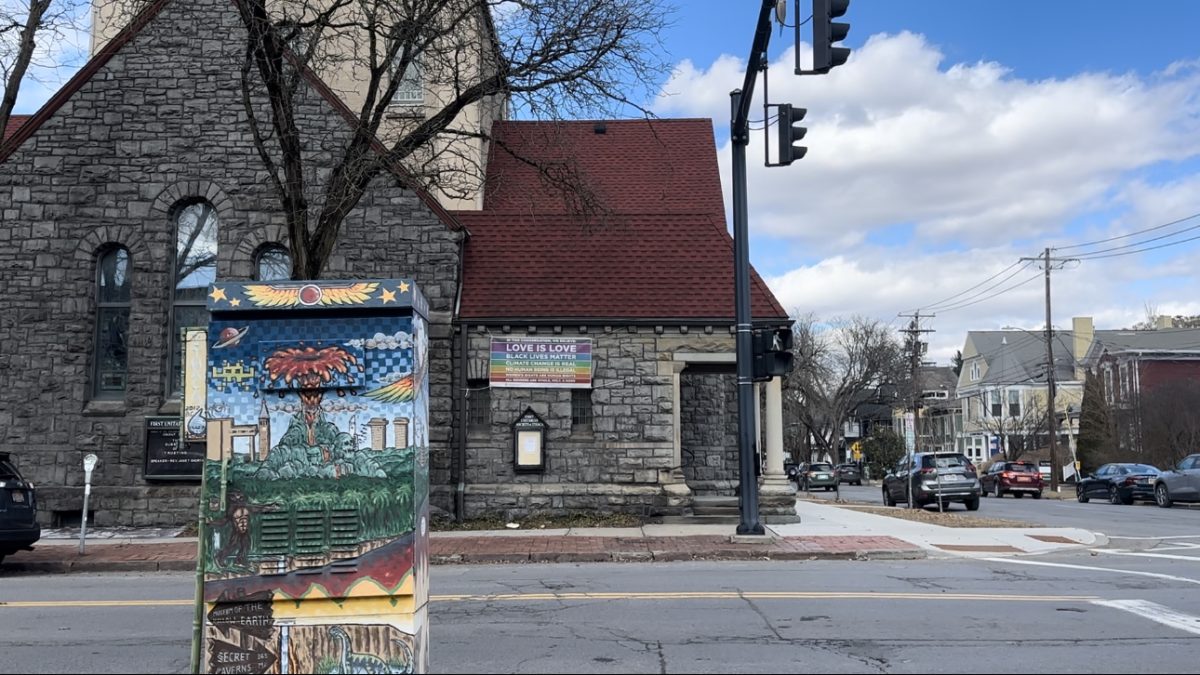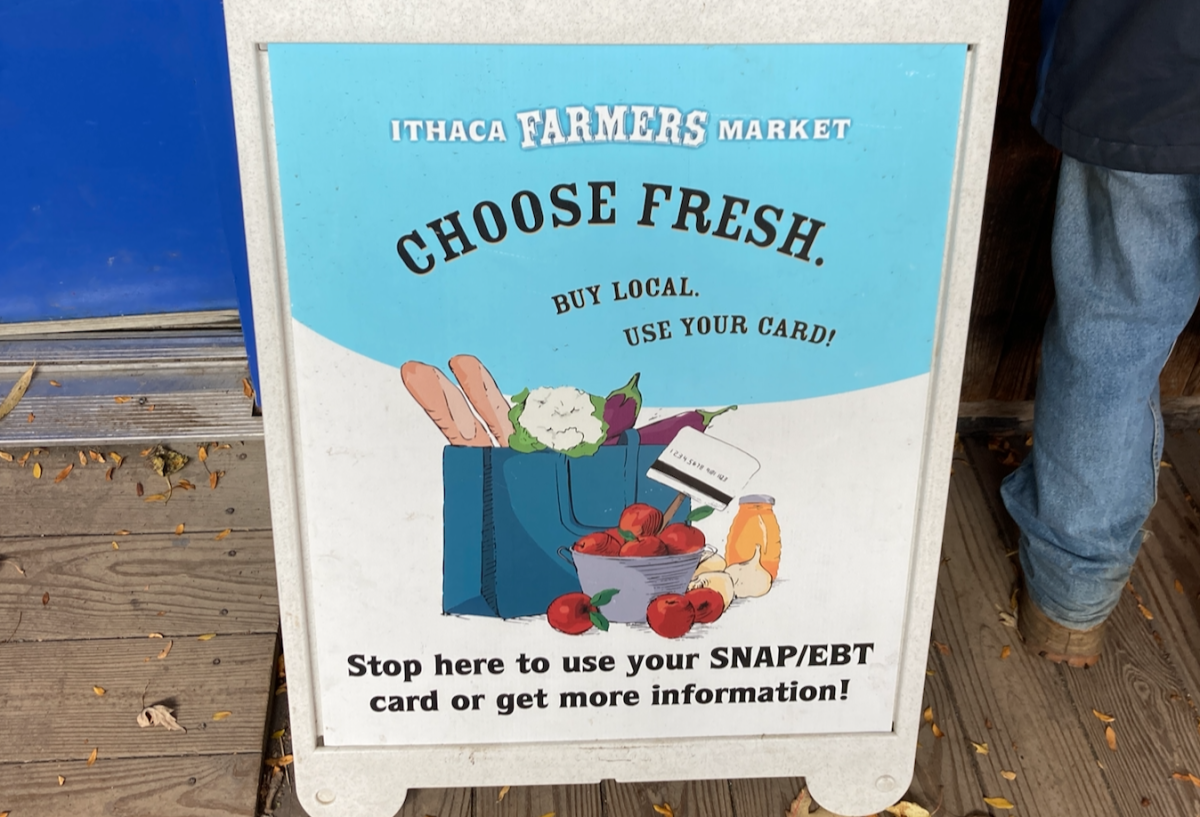Upon entering the Community Arts Partnership (CAP) ArtSpace Gallery, visitors can see a black poster with a teddy bear in the center hanging on the wall. On the poster, there is text written in a child’s handwriting that reads: “Por que estoy aqui,” translating to “why am I here.” Underneath the teddy bear, the caption reads: “At least 2,654 immigrant children in ICE custody were separated from their guardians, crammed into diseased cells, and left unfed and unwashed.”

This poster is part of the exhibition and event series, “How Did We Get Here?,” which explores the topics of migration and displacement of people both locally and nationally. Inspired by the exhibition How the Light Gets In, at Cornell University’s Johnson Museum of Art, this exhibition “seeks to enrich the local dialogue on migration and displacement” through multiple forms of art such as graphic design, political cartoons and photo series.
“How Did We Get Here?”is organized by the People’s Pop-Project and various other community partnerships. Free to the public, it is located at the CAP ArtSpace Gallery in the Ithaca Commons.
Purpose
“How Did We Get Here?” aims to address the implications of borders in regard to the displacement of minoritized communities, as well as create community dialogue surrounding the stereotypes associated with refugees and asylum seekers.
The welcoming sign at the exhibition reads: “This exhibit and its accompanying events are an exploration of migration, seeking to enrich the dialogue beyond borders, walls, and stereotypes. How did each of us get to Ithaca? What is your shared experience of migration? How have we, as a society, come to our current state of mistrust and fear around migration?”
Paul Wilson, exhibition curator and associate professor in the Department of Art History at Ithaca College, emphasizes the importance of having these conversations in combating hateful rhetoric surrounding migrants.

“A lot of stories in [the] media and politicians, not just in the United States but in Europe, have a way of describing immigrants and refugees in terms that really dehumanize them,” he said. “To say that there is a swarm of refugee seekers or there is a tide of immigrants all are dehumanizing terms that suggest they are insects or scary natural forces.”
Posters
The posters in the exhibition are designed by IC students currently enrolled in the Graphic Design II class. Students designed the posters for the exhibit based on art pieces at the Johnson Museum of Art.
Jack Reilly, an Integrated Marketing Communications major at IC, designed two posters focusing on the statistics of migrant children who remain detained by the U.S. government and those who are placed in the foster care system after the deportation of their guardians.

“I wanted to do something that would obviously try to raise awareness surrounding immigration policy and specifically the impact on children,” said Reilly. “Just from doing research, it caused me to learn a lot more and become a lot more passionate about the topic.”
Other posters in the exhibit critiqued iconic American symbols of the United States such as the Statue of Liberty and the American Flag. The posters highlighted problematic terms, such as “melting pot” and “illegal immigrants,” that are often used by mainstream media.

Katherine Perdomo, a public health major at IC, shared the importance of seeing art statements directly advocating for undocumented people’s rights.
“These issues directly impact me and my community,” said Perdomo. “We are not a threat to national security. We are not rapists, criminals, or killers. We are humans who deserve to feel safe at home.”
Photo Series
The photo series, “Their Story is Our Story,” is designed to share “first-hand refugee stories to reveal the individuals behind the ‘refugee’ label.” Each individual wrote their own narrative that explains the conditions which left them no choice but to migrant.
“Both the photographs, the way people are photographed, and then their story really emphasizes their status as humans,” said Wilson. “These photographs don’t ask us to take pity on the people they represent, instead to see them as equals.”

The people photographed in the series come from all over the world including Afghanistan, Ukraine, Nigeria and Libya. They have all been displaced from their homes and sought refuge in Europe.
“We aren’t shown their faces and we aren’t told their stories. That’s on purpose,” said Perdomo. “It is easier to hate and fear someone without knowing them, especially if the administration is telling you to.”
Political Cartoons
The exhibition featured political cartoons about migration from various artists around the world. The gallery was curated by Pedro X. Molina, Nicaraguan cartoonist and Ithaca City of Asylum artist-in-residence. Molina and his family fled Nicaragua in 2018 after police officials incarcerated and killed journalists for speaking out against the government.
Molina currently serves as an international scholar for the IC Honors Program and often hosts discussions surrounding these topics.
Many of his cartoons criticize the U.S. immigration system for its lack of efficiency and inaccessibility in creating a path towards citizenship. Other cartoons included in the exhibition highlight the difficult journey of migration and the exploitation of immigrants once they arrive in the United States.

The exhibition remains open until Dec. 3 and various educational events are scheduled to take place at the gallery.
“I hope that people come with an open mind and a willingness to hear other people’s stories and through hearing other people’s stories, to see them as humans, as people who are just like them, with hopes and fears and dreams,” said Wilson.



